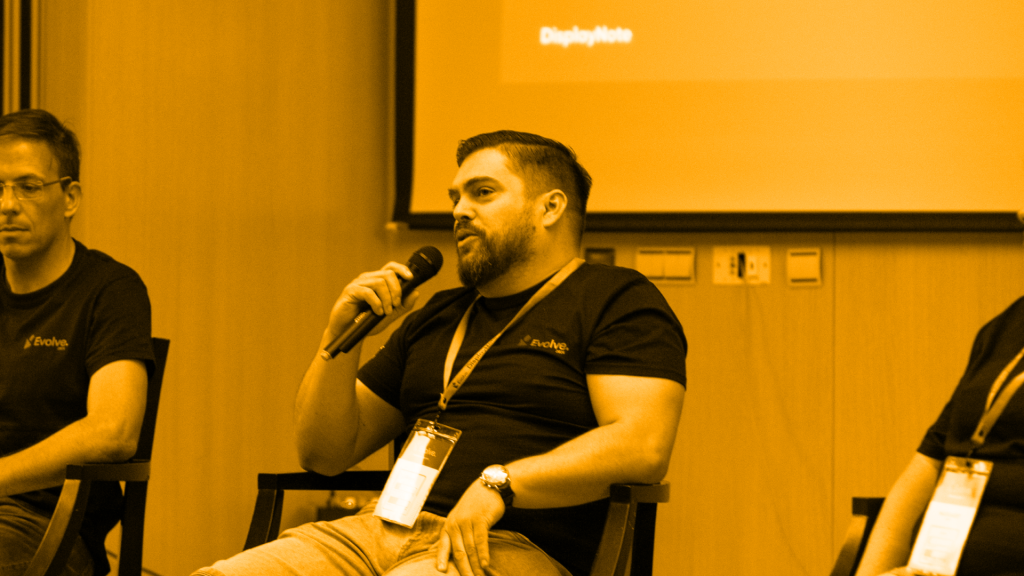
Here’s what’s killing your productive meetings.
There are plenty of guides, hints & tips on how to have better meetings, some of them on this very blog – but what could be more important is knowing what’s currently killing your meetings. What’s the problem that you need to fix?
If Mark from accounting is always going off on a tangent about last night’s game, maybe Mark is the problem… but if you don’t have a Mark figure to pin it on, maybe one of these is the screw up that you just can’t seem to stop.
1. Poor Time Management
This one is usually clear and obvious… after the fact.
You’ve scheduled a certain time and duration for a meeting, maybe there’s a room booking system in your business. What happens if the team using the meeting room before you runs over? What happens if you start the meeting 5 or 10 minutes late? It can happen, someone arrives late or technology problems presents itself, taking too long getting set up or one of the other myriad reasons that can hold you back.
You need to do everything in your considerable power to prevent this; sure, we know you aren’t Iron Man or Wonder Woman but you’ve got a particular set of skills; use them.
Ensure everyone is reminded when meeting will start. If lack of promptness is a problem, don’t be shy in addressing it; prompt them the day before; the morning of; an hour before; even 10 minutes before.
If the topics and conversation keep running away from you, be a dictator.
Be frank with people and let them know they are disrupting and causing a backlog in productivity and efficiency.
This is a really common problem that kills meeting flow and productivity, but it’s also one of the easiest to get on top of.
2. Not using the right technologies
This can be more of an endemic problem within organisations. If, for example, nobody has (or is allowed) access to cloud storage in the workplace, accessing data when you’re in a meeting room can be an issue. Firewall issues are commonplace and often businesses mistakenly put security in the way of productivity, when in actual fact they should work in tandem.
If scheduling is a problem for your meetings, use one of the many meeting room booking solutions out there; better to solve it early and easily than run into the same blockers time and time again.
Within the meeting room itself, you’re there to share and work together on information, data and content; in one way or another, that’s what’s happening. Do it productively and efficiently and you’ll reap the benefits.
Using a smart display such as a large format touch display has the potential to completely upgrade how you use meeting rooms, having the ability to engage with content for all to see at the front instead of sharing print-outs or all working off the same document on your devices but having no synchronisation.
Introducing a Wireless Presentation System such as Montage can boost that even further, allowing up to 6 connected devices to be displayed on screen simultaneously. Meeting attendees can collaborate with each other without having to face problems such as cable-hunting (and fighting over plugs and wires), switching presenters doesn’t have to take time and effort, it can be done from a button within your browser. And attendees can join from anywhere in the world, with full video & voice, meaning when you have teleconference meetings, it’s no longer a case of seeing and hearing the person but not the content you’re meeting about or collaborating on; it’s all-in-communication-and-collaboration!
3. Not prioritising
What are you having a meeting for?
Set an agenda and stick to it. Disrupting meetings and getting the workplace productivity flow backed up and clogged because you got off-track is just going to frustrate your plans and actions.
Be strict but be sensible. Of course topics may come up that warrant further discussion and exploration; earmark them and follow them up later; if they do seem key then it’s fair enough to switch course but make certain that the topics on the agenda are covered at some point, even if it means scheduling again for another meeting.
Equally, when it comes to prioritising… do you need to have a meeting at all? Does everybody need to be there?
There’s a great anecdote of the late Steve Jobs where he was in a meeting and spotted someone who he didn’t recognise – he asked why she was there and her response was that she had been asked to attend because she worked on a parallel project – he quite simply told her to leave.
Meetings are disruptive, they take time and effort – which is justifiable if you need to be there, there are too many people attending meetings who are there out of compulsion, habit and expectation rather than a legitimate functional and practical role to have in the meeting space.
Make your meetings effective and productive!
Next Steps
Want to stop wasting valuable time in your meetings? Check out our FREE ebook: 52 Tips for Killer Meetings. Packed full of tips that will help you Chair More Effective Meetings, Increase Creativity & Boost Collaboration.

Want to stay in the loop?
Keep up-to-date with everything DisplayNote – including new releases, job openings, and customer giveaways.
Don’t worry, we’ll not spam you and we’ll never share your email with anyone






